Falafel is a popular Middle Eastern dish that has become increasingly popular around the world. If you’ve never tried falafel before, you may be wondering what it tastes like.
The answer to this question is not straightforward, as the taste of falafel can vary depending on the specific blend of spices and herbs used in the recipe.
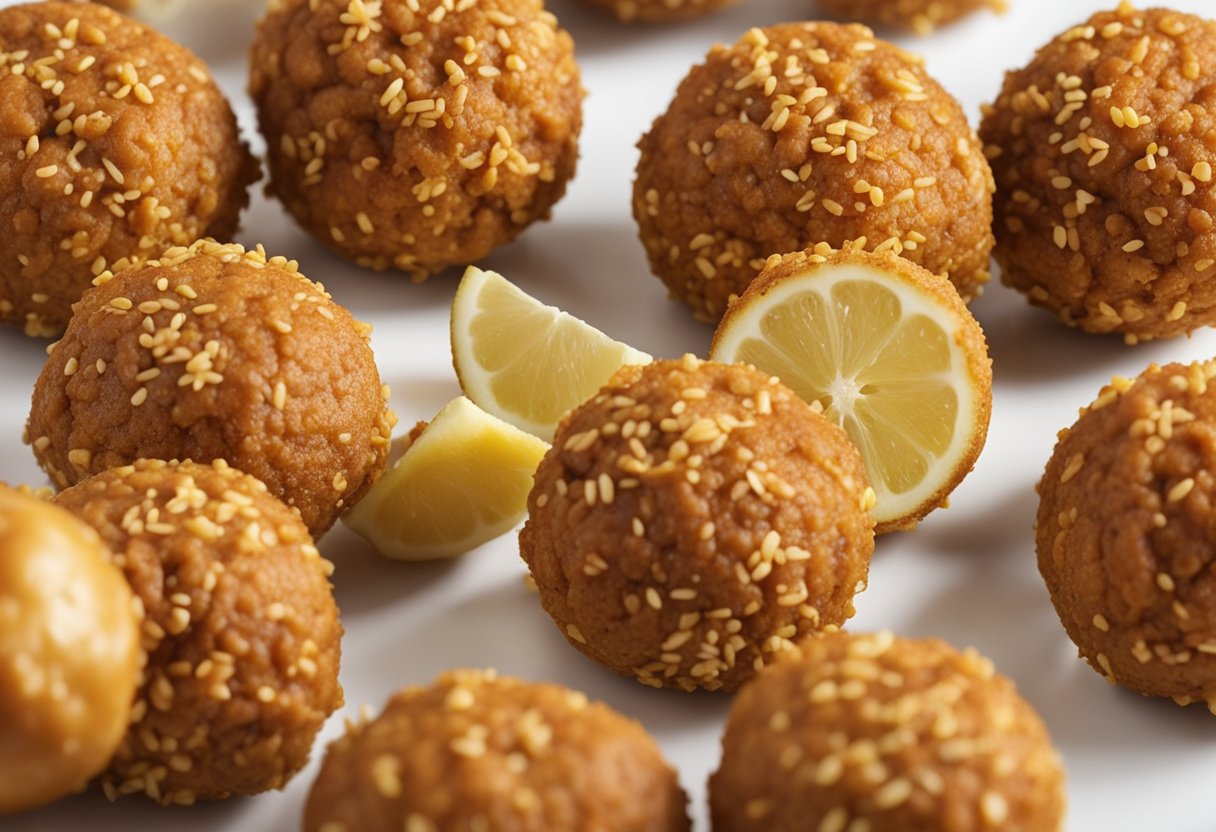
Generally speaking, falafel has a savory and slightly earthy taste, with a hint of spice. Some of the key ingredients that contribute to its unique flavor include cumin, coriander, garlic, and parsley.
Falafel also has a slightly crunchy texture on the outside and a soft, grainy texture on the inside.
It is typically served with a variety of sauces and toppings, such as tahini, hummus, or tzatziki, which can also affect the overall taste.
Key Takeaways
- Falafel has a savory and slightly earthy taste, with a hint of spice, and a slightly crunchy texture on the outside and a soft, grainy texture on the inside.
- The taste of falafel can vary depending on the specific blend of spices and herbs used in the recipe.
- Falafel is typically served with a variety of sauces and toppings, which can also affect the overall taste.
Understanding Falafel
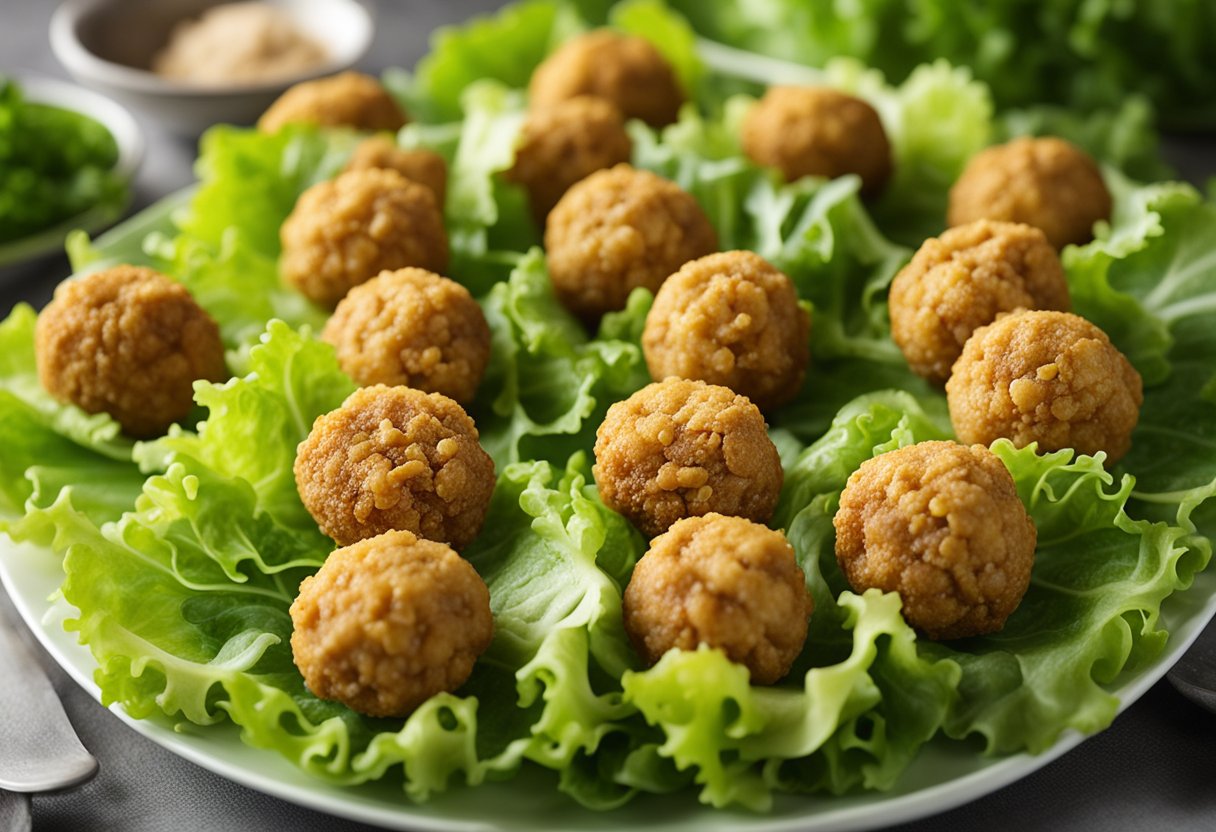
Falafel is a popular Middle Eastern dish that has gained worldwide popularity. It is made from ground chickpeas or fava beans, mixed with herbs and spices, and then formed into small balls or patties.
The mixture is then deep-fried until it becomes crispy on the outside and tender on the inside.
The origins of falafel are not clear, but it is believed to have originated in Egypt or Palestine. Today, it is a staple food in many Middle Eastern countries, and it is also popular in international cuisine.
Falafel has a unique taste that is a combination of savory and slightly herby flavors. The herbs and spices used in making falafel include cumin, coriander, garlic, and parsley.
These spices give it a warm, slightly earthy taste. The texture of falafel is crunchy on the outside and soft on the inside, making it a satisfying dish to eat.
Falafel is typically served in a pita bread, along with vegetables like lettuce, tomato, cucumber, and onion.
It is also commonly served with tahini sauce, which is made from sesame seeds and has a creamy, nutty flavor. Some people also enjoy falafel with hummus, a chickpea-based dip.
Falafel has gained worldwide popularity because it is a delicious and healthy food option. It is a good source of protein, fiber, and complex carbohydrates, making it a filling and satisfying meal.
Additionally, it is a vegetarian and vegan-friendly food option, making it a great choice for people who follow a plant-based diet.
Overall, falafel is a tasty and nutritious food that has become a beloved dish around the world.
Ingredients of Falafel
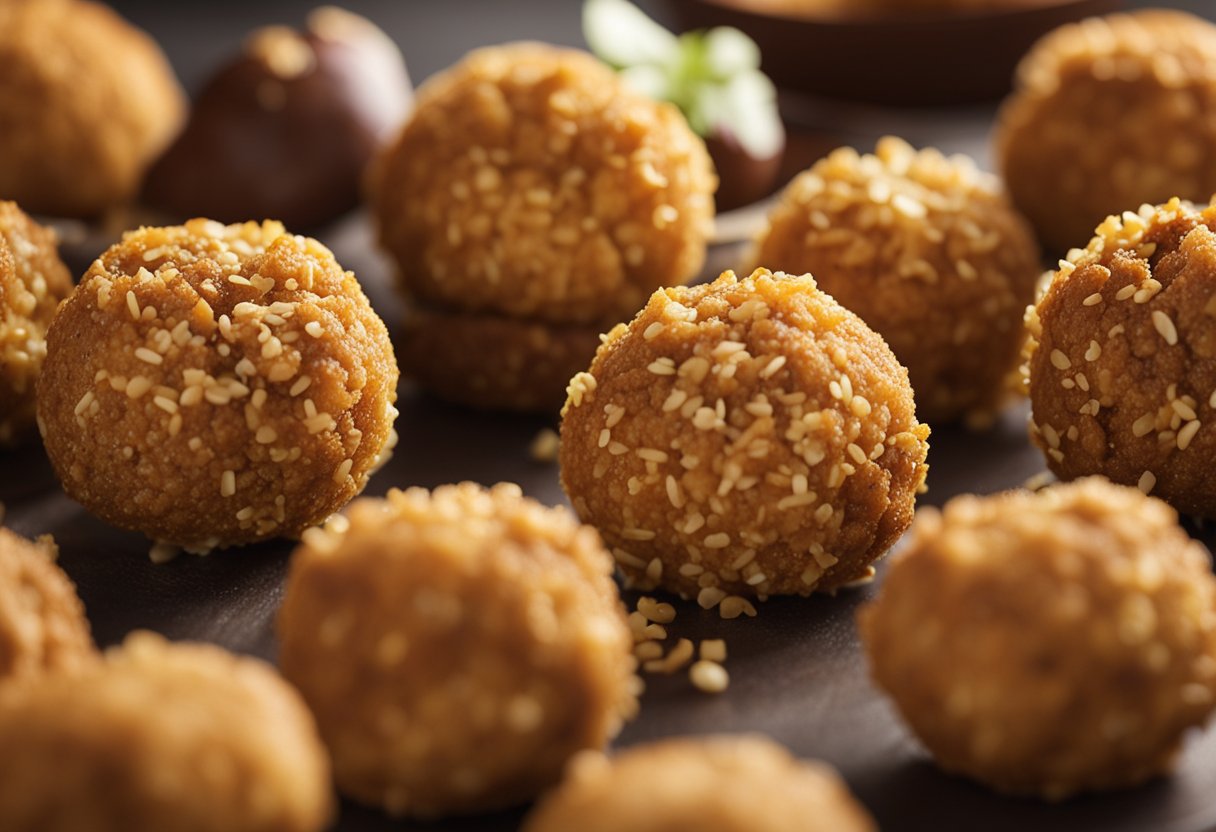
Falafel is a popular Middle Eastern dish that is enjoyed all around the world. It is made from a combination of various ingredients that come together to create a delicious and nutritious meal.
In this section, I will discuss the main and additional ingredients that are typically used to make falafel.
Main Ingredients
The two main ingredients used in falafel are chickpeas and fava beans. Chickpeas are a great source of protein, fiber, and essential vitamins and minerals.
Fava beans are also a good source of protein, fiber, and iron. These two ingredients are combined with onion, garlic, coriander, parsley, cumin, salt, and pepper to create the base of falafel.
Onion and garlic are used to add flavor to the falafel. Coriander and parsley are added to give it a fresh and herbaceous taste.
Cumin is used to add a slightly spicy and earthy flavor to the falafel. Salt and pepper are added to enhance the overall taste of the dish.
Additional Ingredients
In addition to the main ingredients, there are several additional ingredients that can be used to make falafel. Oil is used to fry the falafel balls until they are crispy and golden brown.
Vegetable oil is the most commonly used oil for frying falafel.
Cilantro and mint can also be added to the falafel mixture to give it a unique and refreshing taste. Sesame seeds can be added to the outside of the falafel balls to give them a nutty flavor and a crunchy texture.
Cayenne pepper and black pepper can be added to the falafel mixture to give it a spicy kick. However, the amount of pepper used should be adjusted to suit individual tastes.
Overall, the combination of these ingredients creates a delicious and nutritious meal that is enjoyed by many.
The Taste Profile of Falafel
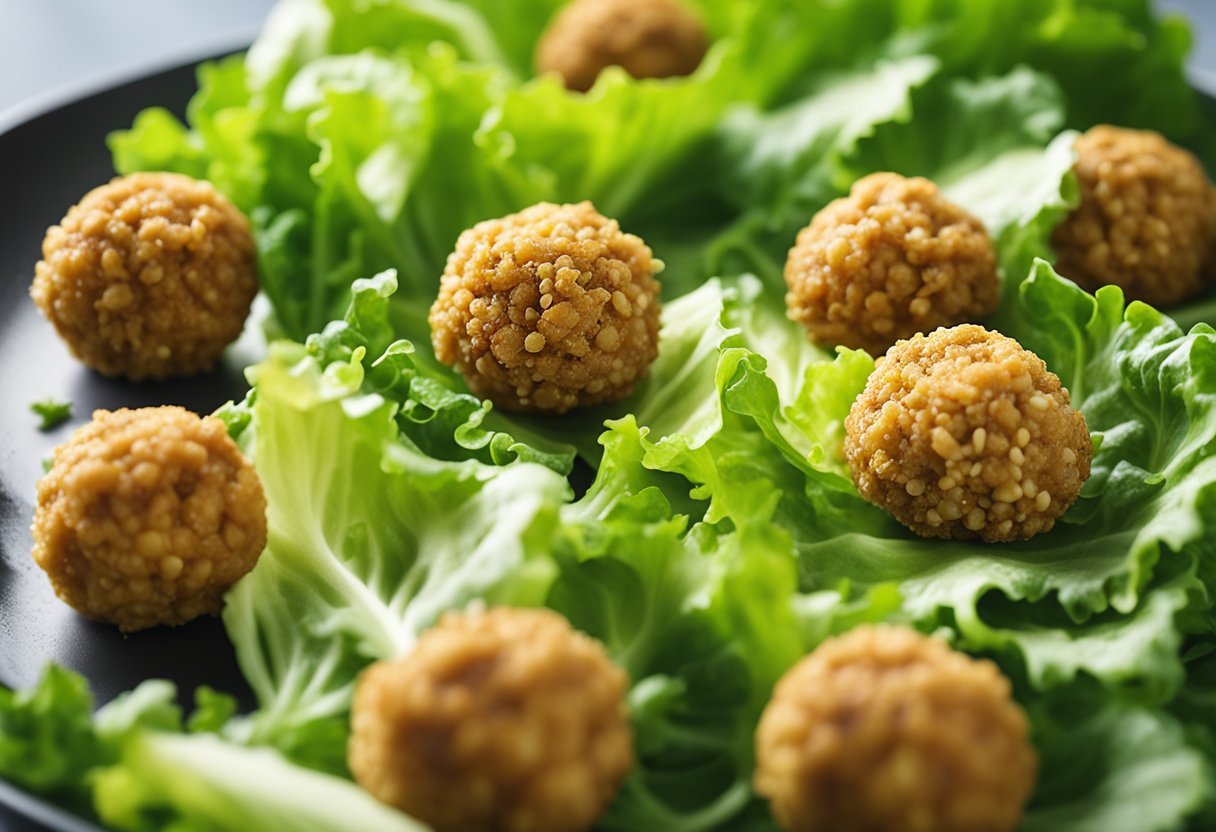
Falafel is a popular Middle Eastern food that is enjoyed by many people around the world. It is a vegetarian dish made from ground chickpeas or fava beans that are seasoned with a variety of herbs and spices.
In this section, I will explore the taste and texture profile of falafel.
Flavor Profile
Falafel has a unique and strong flavor that is difficult to describe. It is a combination of earthy, nutty, and herbaceous flavors that are enhanced by the spices used in the recipe.
The most common spices used in falafel include cumin, coriander, parsley, and garlic. These spices give falafel its distinct taste and aroma.
The taste of falafel can vary depending on the specific blend of spices and herbs used in the recipe. Some people may find it to be slightly spicy, while others may find it to be mild.
The flavor of falafel is best described as savory and slightly earthy, with a hint of spice.
Texture Profile
The texture of falafel is just as important as its flavor. Falafel has a unique texture that is both crispy and soft. The exterior is crispy and crunchy, while the interior is soft, fluffy, and grainy.
The texture of falafel is achieved by using a combination of ground chickpeas or fava beans, herbs, and spices.
Falafel is traditionally served in a pita sandwich, either wrapped or with the sides of vegetables. It is also commonly served as a snack or appetizer.
The texture of falafel makes it a perfect option for vegetarian or vegan diets, as it provides a satisfying crunch without the need for meat.
In conclusion, falafel has a unique taste and texture profile that is difficult to replicate. It is a delicious and healthy option for anyone looking for a vegetarian or vegan meal.
Forms of Falafel
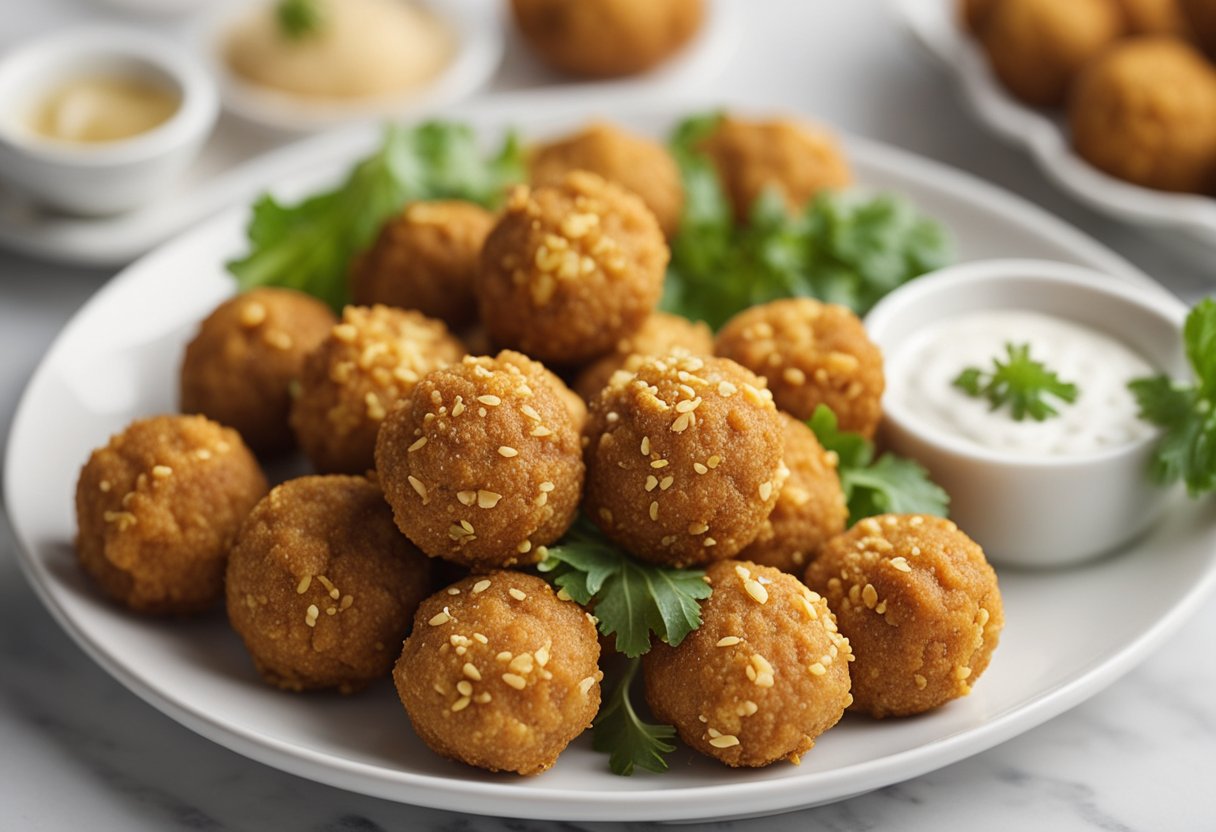
Falafel is a savory donut-shaped ball or patty made from ground chickpeas or fava beans mixed with herbs and spices. It is a versatile dish that can be enjoyed in various forms, including falafel balls and falafel patties.
Falafel Balls
Falafel balls are the most common form of falafel. They are deep-fried to achieve a crispy exterior while maintaining a soft and fluffy interior.
Falafel balls are often served in a pita bread pocket with vegetables and sauces, making it a popular street food in the Middle East.
Falafel balls can be made using a traditional deep-frying method or baked in the oven. For a healthier option, you can also use an air fryer to cook falafel balls.
Falafel Patties
Falafel patties are another popular form of falafel. They are made by shaping the falafel mixture into flattened patties and then frying or baking them.
Falafel patties can be served as a burger substitute or as a side dish.
Falafel patties are a good option for those who prefer a more substantial texture than falafel balls. They are also easier to make than falafel balls since they don’t require shaping and are easier to handle during the cooking process.
In conclusion, falafel is a delicious and versatile dish that can be enjoyed in various forms. Whether you prefer falafel balls or falafel patties, you can enjoy this dish in a variety of ways.
Falafel in Cuisine
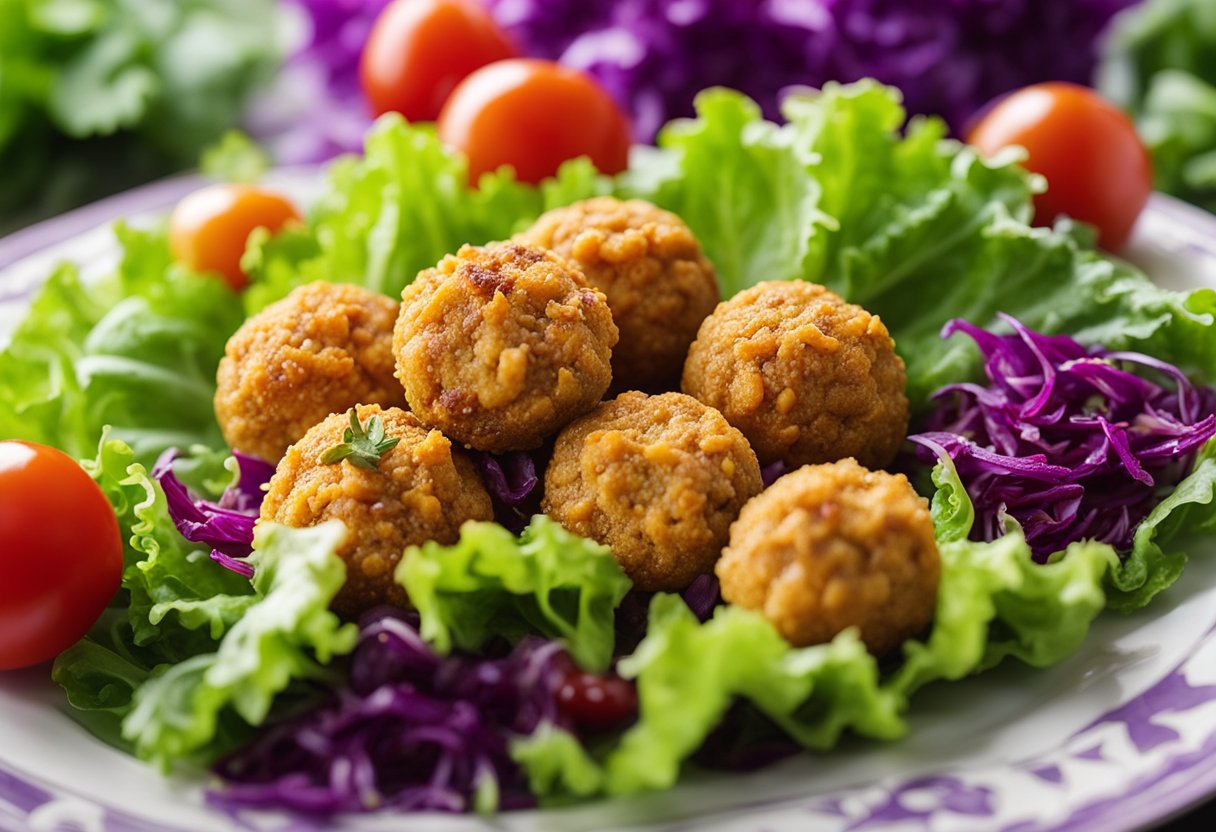
As a staple of Middle Eastern cuisine, falafel has become a beloved street food around the world. Made from ground chickpeas or fava beans, falafel has a unique flavor that is both savory and slightly herby.
Falafel Sandwich
One of the most popular ways to enjoy falafel is in a sandwich. Typically served in a wrap or pita bread, a falafel sandwich is filled with toppings such as lettuce, tomato, cucumbers, and pickles.
The sandwich can also be served with a variety of dips, including hummus, tahini sauce, and tzatziki.
Falafel with Dips
Falafel is often served as an appetizer or snack with a variety of dips. Hummus, made from chickpeas, is a popular dip that pairs well with falafel.
Tahini, a paste made from ground sesame seeds, is another common dip that complements the flavor of falafel.
Falafel in Salad
Falafel can also be enjoyed in a salad. Typically served with a variety of vegetables, such as cucumber and tomato, a falafel salad is a healthy and satisfying meal.
The falafel can be crumbled on top of the salad or served as a side dish.
To make falafel at home, you will need a food processor to grind the chickpeas or fava beans.
Once the mixture is ground, it is combined with a variety of herbs and spices, such as coriander and cumin, before being formed into balls or patties and deep-fried.
Overall, falafel is a versatile and delicious dish that can be enjoyed in a variety of ways. Whether you prefer it in a sandwich, with dips, or in a salad, falafel is a flavorful and satisfying meal that is sure to please.
Health Benefits of Falafel
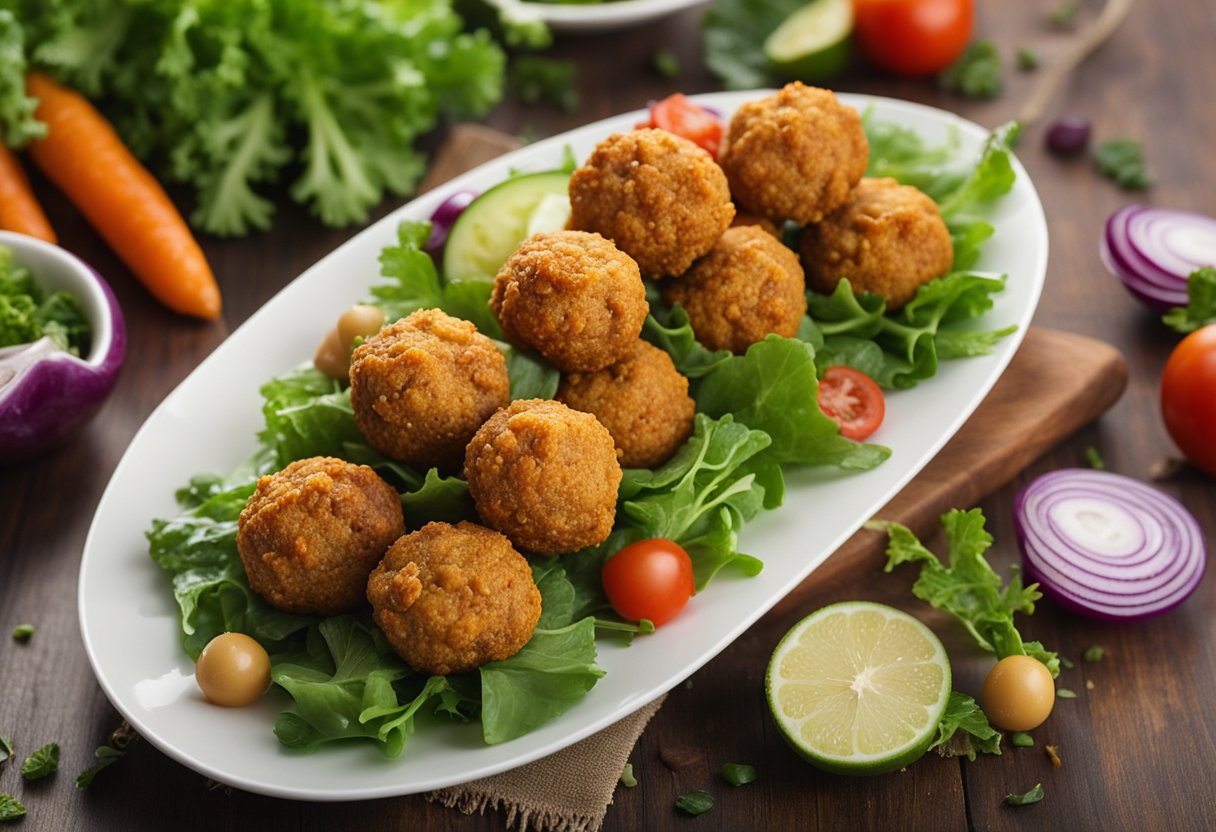
Falafel is a popular Middle Eastern dish made from ground chickpeas or fava beans. It is a tasty and healthy alternative to meat-based dishes. In this section, I will discuss the nutritional value and dietary considerations of falafel.
Nutritional Value
Falafel is a good source of protein and fiber. One serving of falafel contains about 5 grams of protein and 3 grams of fiber. Protein is essential for building and repairing tissues in the body, while fiber helps promote healthy digestion.
Falafel is also rich in vitamins and minerals. Chickpeas, the main ingredient in falafel, are a good source of iron, magnesium, and vitamin B6.
Iron is important for carrying oxygen throughout the body, while magnesium helps regulate blood sugar levels and blood pressure. Vitamin B6 is essential for brain development and function.
Dietary Considerations
Falafel is a popular choice for vegetarians and vegans. It is a plant-based dish that is free from animal products. This makes it a good option for people who are looking to reduce their meat consumption.
Falafel is also a healthy choice for people who are watching their weight. It is low in fat and calories, making it a good option for people who are trying to maintain a healthy weight.
One falafel ball contains about 50-60 calories, depending on the size.
However, it is important to note that falafel is often deep-fried, which can add extra calories and fat. To make falafel healthier, it can be baked or air-fried instead of deep-fried.
In conclusion, falafel is a healthy and nutritious dish that is packed with protein, fiber, vitamins, and minerals. It is a great option for vegetarians, vegans, and people who are watching their weight.
By making simple modifications to the cooking method, falafel can be made even healthier.
Making Falafel at Home
Falafel is a delicious Middle Eastern dish that can be enjoyed as a snack or as a main dish. Making falafel at home is easy and fun, and it allows you to customize the recipe to your taste.
In this section, I will share with you some tips and tricks for making delicious falafel at home.
Preparing the Mixture
The key to making great falafel is to have a well-prepared mixture. The mixture is made from ground chickpeas or fava beans, and it is seasoned with herbs and spices. Here are some tips for preparing the mixture:
- Soak the chickpeas overnight to make them soft and easy to grind.
- Use a food processor to grind the chickpeas into a fine texture.
- Add fresh herbs like parsley, cilantro, or mint to the mixture for added flavor.
- Season the mixture with spices like cumin, coriander, and garlic powder.
Cooking Methods
There are several ways to cook falafel, including frying, baking, and using an air fryer. Here are some tips for each method:
- Frying: Heat oil in a deep frying pan and fry the falafel until golden brown. Drain on paper towels to remove excess oil.
- Baking: Preheat the oven to 400°F and bake the falafel for 20-25 minutes, flipping halfway through.
- Air Fryer: Preheat the air fryer to 375°F and cook the falafel for 10-12 minutes, flipping halfway through.
Serving Suggestions
Falafel can be served in many different ways, and it is often accompanied by sauces and dips. Here are some serving suggestions:
- Stuff falafel into a pita bread with lettuce, tomato, and cucumber for a delicious sandwich.
- Serve falafel on a bed of salad with lemon juice and olive oil dressing.
- Make falafel burgers by placing a falafel patty on a bun with lettuce, tomato, and your favorite sauce.
- Serve falafel with hummus, tahini, or tzatziki sauce for dipping.
Variations of falafel can be made by adding different ingredients to the mixture, such as hushpuppies or bread crumbs. Experiment with different flavors and find your favorite recipe.
Frequently Asked Questions
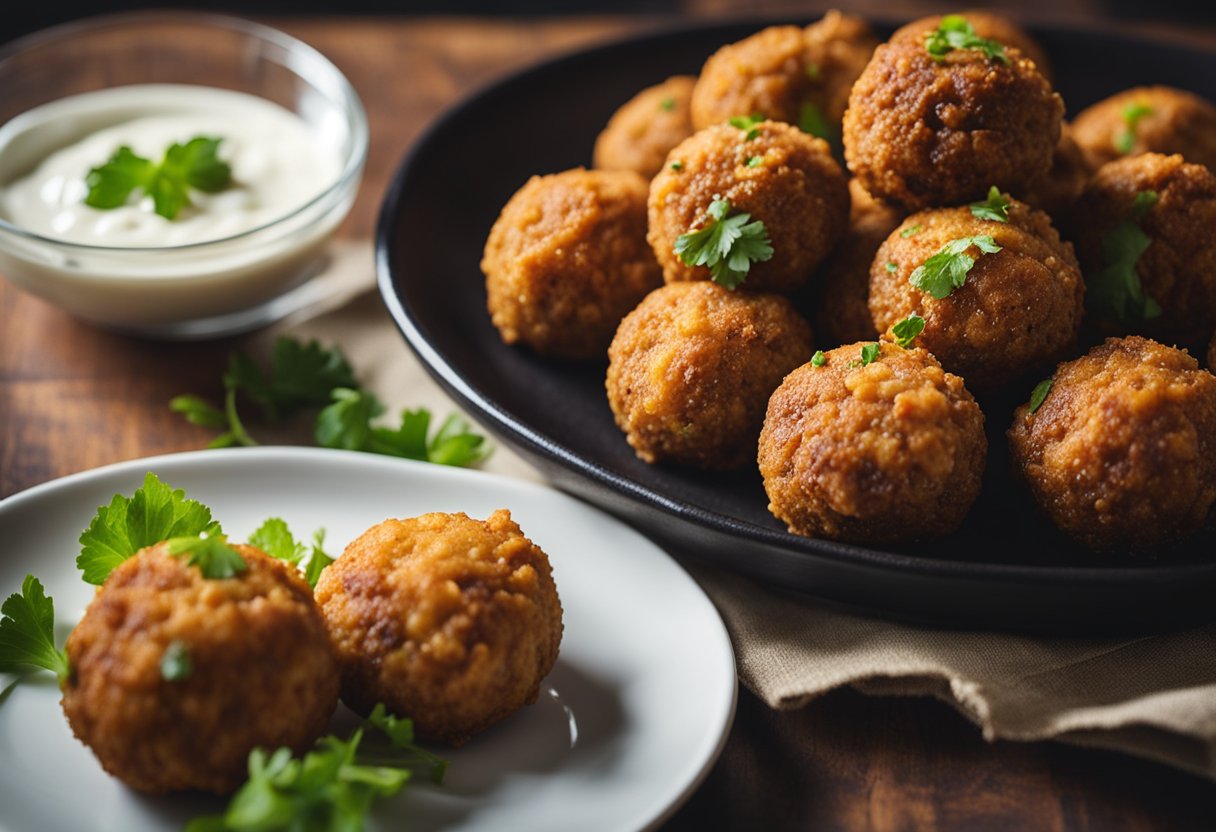
What are some common ingredients in falafel?
Falafel is typically made with chickpeas or fava beans, which are blended with herbs and spices such as cumin, coriander, and garlic.
Some variations may include additional ingredients such as onions, parsley, or mint.
What is the texture of falafel?
Falafel has a crispy exterior and a soft, fluffy interior. The texture is similar to that of a hushpuppy or a fritter.
How does falafel taste compared to other foods?
Falafel has a unique flavor that is a delightful combination of savory and slightly herby tastes. It is primarily made of chickpeas or fava beans, which are seasoned with spices like cumin, coriander, and garlic.
These spices give it a warm, slightly earthy taste. Some people describe it as being similar to a savory donut.
What are some popular sauces to pair with falafel?
Falafel is often served with a variety of sauces, including tahini, tzatziki, hummus, or garlic sauce. These sauces complement the flavors of the falafel and add a creamy, tangy, or nutty flavor to the dish.
Are falafels a healthy food choice?
Falafel can be a healthy food choice, as it is high in protein and fiber. However, it is often deep-fried, which can add extra calories and fat. Baked or air-fried falafel is a healthier alternative.
Where can I find the best falafel near me?
The best falafel can be found at Middle Eastern restaurants, food trucks, or markets. You can also make your own falafel at home using fresh ingredients and a food processor.







